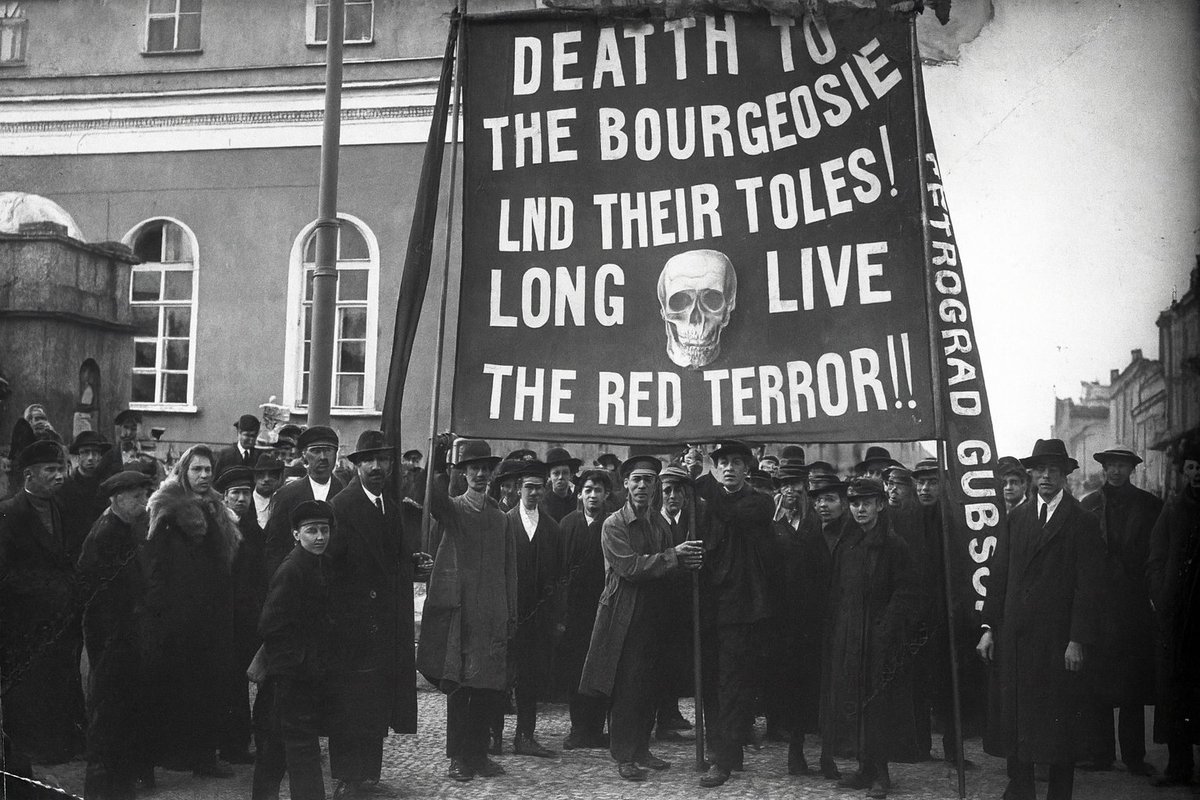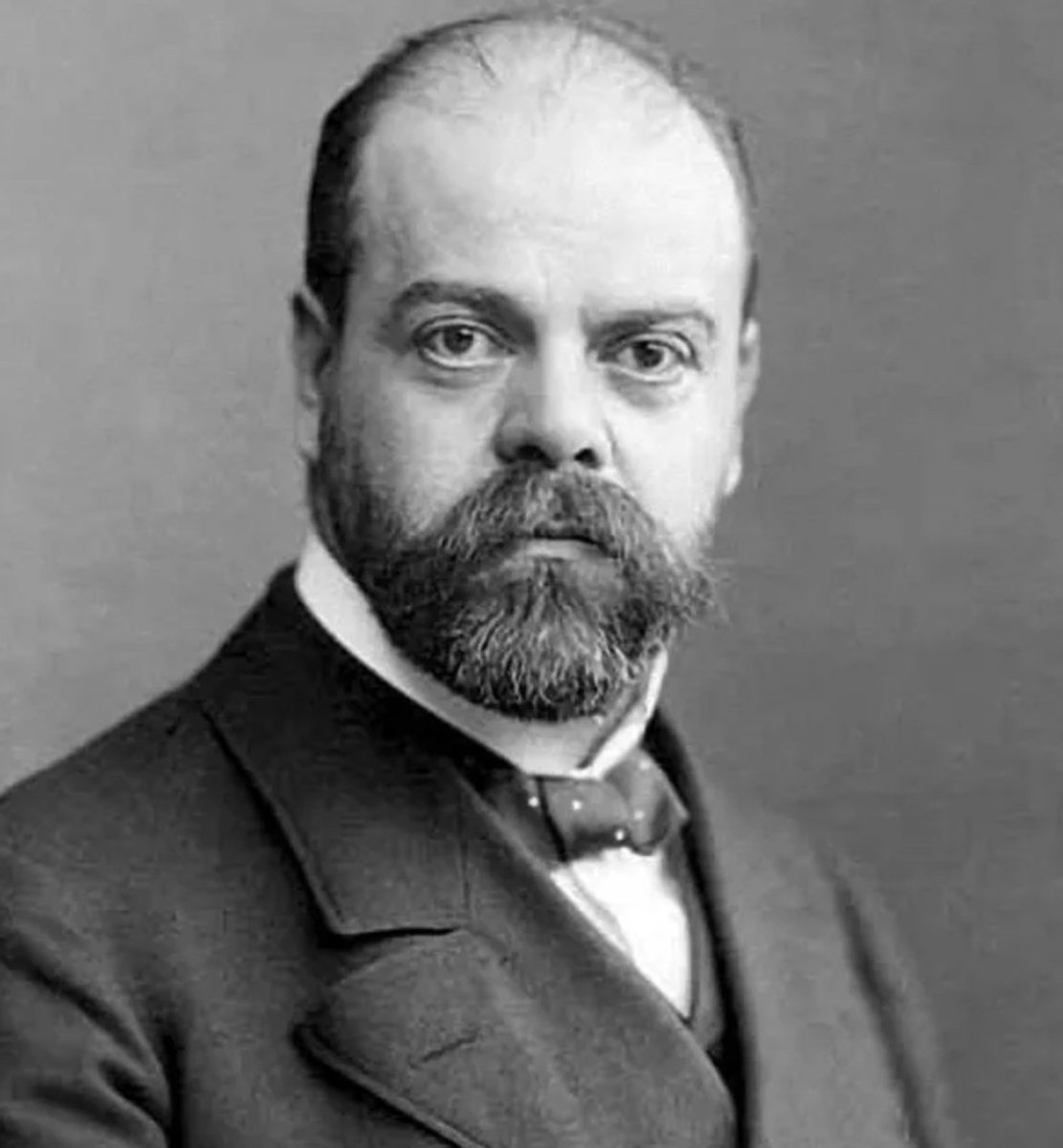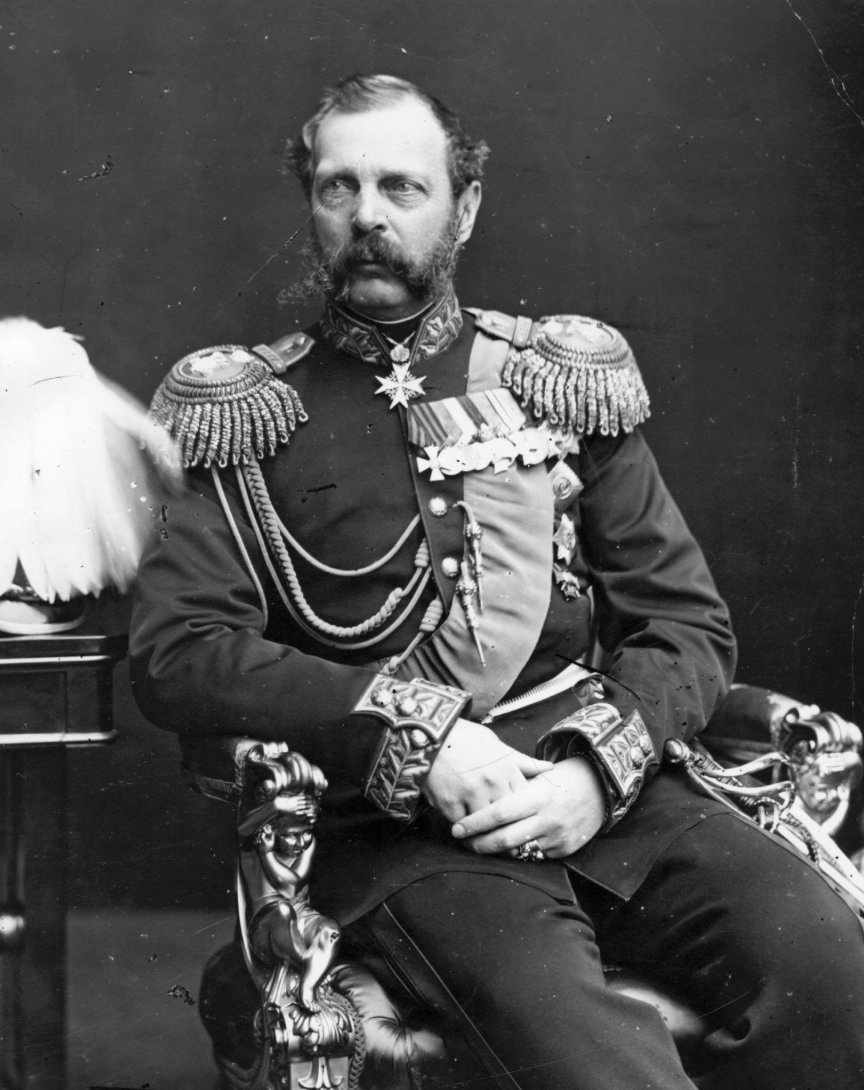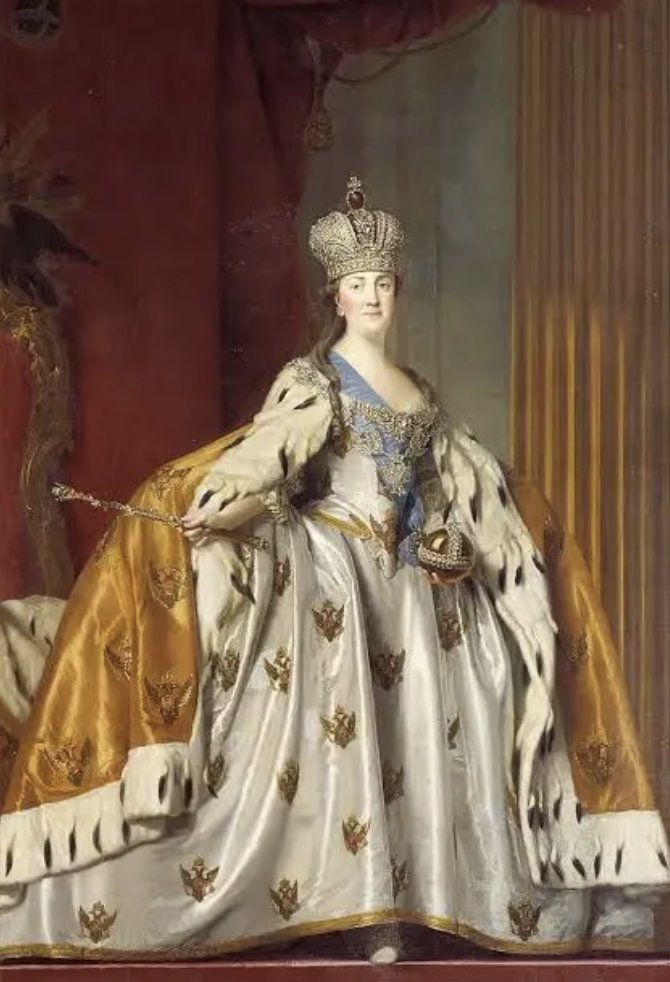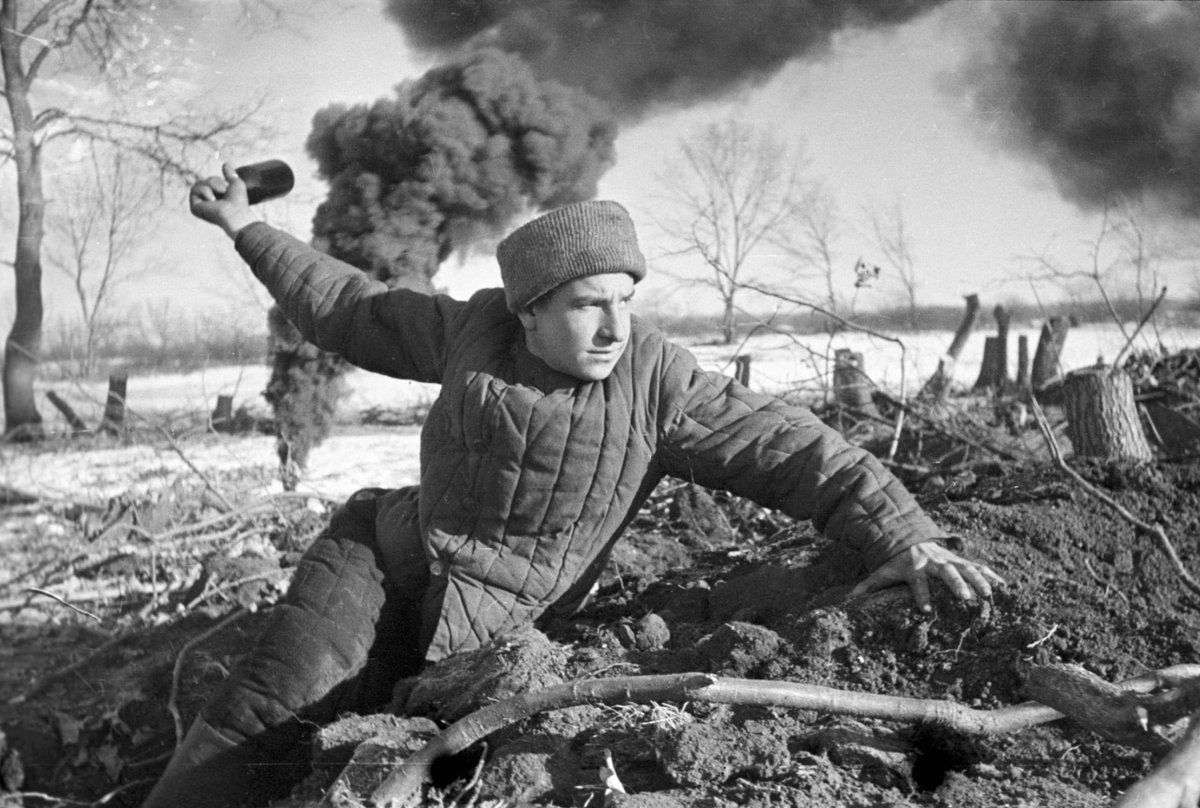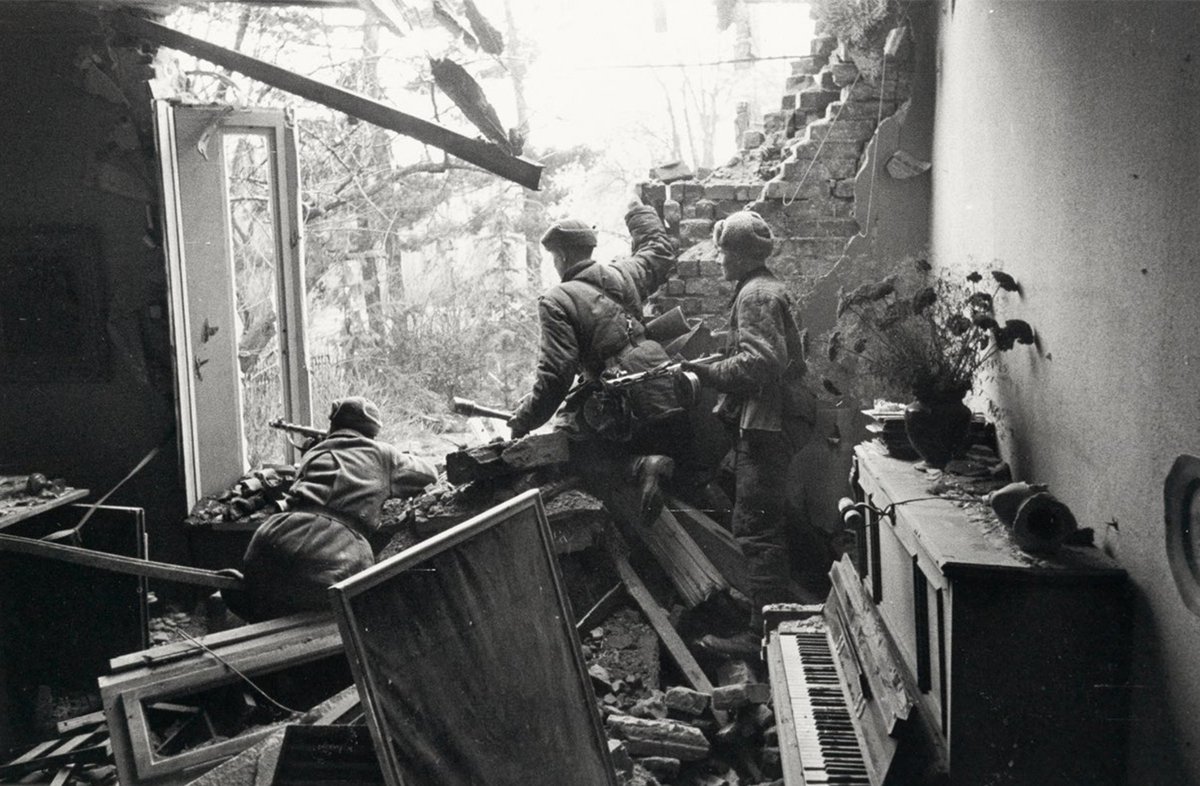How Putin made Russia Great Again or why Russians love him so much
(very long 🧵)
After the collapse of the USSR, Russia became a colony of the West and lost its sovereignty. During the 1990s and under Yeltsin’s government, the country nearly fell apart. The military and industries across all sectors were destroyed, school textbooks were rewritten, and resources were sold off to Western corporations. It’s a serious question whether Russia would even exist today if things had continued that way. However, with Putin’s arrival, everything changed - he brought Russia back to itself.
Bio
Few in the West know about Putin’s mentor, Anatoly Sobchak, who introduced him to politics. Sobchak was a strong supporter of liberal-democratic ideas and one of the founders of the “Democratic Russia” party.
In the early 1990s, Vladimir Putin worked as an assistant to the rector of Leningrad State University for international affairs.
This position served as a cover, as he was an active KGB agent. When Sobchak noticed him at the University and invited him to join his team, Putin had to admit his work in intelligence. Realizing that combining KGB work with political activity was impossible, he resigned from the KGB.
In June 1991, Sobchak became the mayor of St. Petersburg. During the tense political environment of the time, from 1993 onward, Sobchak often entrusted Putin to act as mayor during his foreign trips, showing great trust in his professionalism. However, starting in 1995, a campaign to discredit Sobchak began, organized by his political opponents in Moscow who viewed him as a potential rival for the presidency. Using accusations of misconduct, law enforcement agencies like the Prosecutor’s Office, the Ministry of Internal Affairs, and the FSB effectively ended his political career. His worsening health worked to his enemies’ advantage, reducing his ability to defend himself. At one point, they even tried to block him from traveling abroad for medical treatment.
x.com/rinalu_/status…
(very long 🧵)
After the collapse of the USSR, Russia became a colony of the West and lost its sovereignty. During the 1990s and under Yeltsin’s government, the country nearly fell apart. The military and industries across all sectors were destroyed, school textbooks were rewritten, and resources were sold off to Western corporations. It’s a serious question whether Russia would even exist today if things had continued that way. However, with Putin’s arrival, everything changed - he brought Russia back to itself.
Bio
Few in the West know about Putin’s mentor, Anatoly Sobchak, who introduced him to politics. Sobchak was a strong supporter of liberal-democratic ideas and one of the founders of the “Democratic Russia” party.
In the early 1990s, Vladimir Putin worked as an assistant to the rector of Leningrad State University for international affairs.
This position served as a cover, as he was an active KGB agent. When Sobchak noticed him at the University and invited him to join his team, Putin had to admit his work in intelligence. Realizing that combining KGB work with political activity was impossible, he resigned from the KGB.
In June 1991, Sobchak became the mayor of St. Petersburg. During the tense political environment of the time, from 1993 onward, Sobchak often entrusted Putin to act as mayor during his foreign trips, showing great trust in his professionalism. However, starting in 1995, a campaign to discredit Sobchak began, organized by his political opponents in Moscow who viewed him as a potential rival for the presidency. Using accusations of misconduct, law enforcement agencies like the Prosecutor’s Office, the Ministry of Internal Affairs, and the FSB effectively ended his political career. His worsening health worked to his enemies’ advantage, reducing his ability to defend himself. At one point, they even tried to block him from traveling abroad for medical treatment.
x.com/rinalu_/status…
Putin’s Loyalty Over Political Ambition
At this critical moment, Putin showed complete loyalty to his mentor, Sobchak. He knew that helping Sobchak leave the country involved serious risks to his own career. First, he was going against powerful state agencies that were actively pursuing Sobchak. If the plan failed, Putin could have been accused of aiding or hiding him. Second, Sobchak was a political outsider at the time, and supporting him could have been seen as a strategic mistake, alienating influential allies in Moscow. Third, successfully getting Sobchak out of the country under the strict control of the FSB, prosecutors, and the Ministry of Internal Affairs required extreme caution. It could have been seen as breaking the law, threatening not just Putin’s career but also his personal freedom.
Despite these risks, Putin, using skills from his intelligence background, arranged for Sobchak to leave for France, where he underwent life-saving surgery. This act was a remarkable display of loyalty and courage. After the operation, Putin reported the outcome to Yeltsin, who, after a pause, approved his actions, saying, “You did the right thing.” This moment highlighted not only Putin’s loyalty to Sobchak but also his willingness to take risks for his principles and a sense of justice, which later became a defining feature of his political career.
At this critical moment, Putin showed complete loyalty to his mentor, Sobchak. He knew that helping Sobchak leave the country involved serious risks to his own career. First, he was going against powerful state agencies that were actively pursuing Sobchak. If the plan failed, Putin could have been accused of aiding or hiding him. Second, Sobchak was a political outsider at the time, and supporting him could have been seen as a strategic mistake, alienating influential allies in Moscow. Third, successfully getting Sobchak out of the country under the strict control of the FSB, prosecutors, and the Ministry of Internal Affairs required extreme caution. It could have been seen as breaking the law, threatening not just Putin’s career but also his personal freedom.
Despite these risks, Putin, using skills from his intelligence background, arranged for Sobchak to leave for France, where he underwent life-saving surgery. This act was a remarkable display of loyalty and courage. After the operation, Putin reported the outcome to Yeltsin, who, after a pause, approved his actions, saying, “You did the right thing.” This moment highlighted not only Putin’s loyalty to Sobchak but also his willingness to take risks for his principles and a sense of justice, which later became a defining feature of his political career.
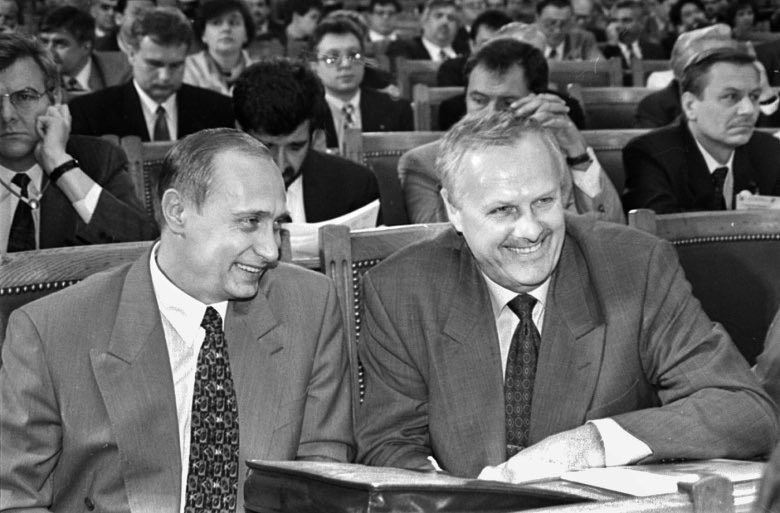
The Turning Point: Russia’s New Year of Change
Since Christmas is a religious holiday in Russia, New Year’s Eve is celebrated similarly to how Christmas is in the West. A New Year’s tree is set up, and children receive gifts from Ded Moroz, the Russian Santa Claus, on the night of December 31st to January 1st. The celebration begins with a televised speech by the president, followed by the countdown to the chimes of the Kremlin clock, Russia’s main timepiece.
Back then, everyone anticipated Boris Yeltsin’s New Year address. By the 2000s, however, Yeltsin could barely speak. He was widely seen as a hopeless alcoholic, mocked by the Russian people and even by foreign leaders like Bill Clinton. Russians felt ashamed of their president, who had become a national embarrassment.
But instead of Yeltsin’s familiar face on TV, a young man appeared. Calm, polite, and well-spoken, he explained that Yeltsin had stepped down due to health reasons, and until the elections in the spring, he would take on presidential duties. He wished everyone a Happy New Year, and for the first time in a while, there was a sense of hope in the air.
When the elections came, people voted for this young man, Vladimir Putin, and he became president. Almost immediately, he introduced significant changes, particularly regarding the oligarchs who had gained immense political influence in the 1990s during the privatization of state enterprises under Yeltsin.
After the collapse of the USSR, several waves of privatization swept through Russia, leaving the nation’s wealth in the hands of a few. While ordinary Russians suffered from a sharp decline in living standards, barely scraping by, the business clans born in the chaos of perestroika solidified their control over the most valuable assets of what was once a great country.
Since Christmas is a religious holiday in Russia, New Year’s Eve is celebrated similarly to how Christmas is in the West. A New Year’s tree is set up, and children receive gifts from Ded Moroz, the Russian Santa Claus, on the night of December 31st to January 1st. The celebration begins with a televised speech by the president, followed by the countdown to the chimes of the Kremlin clock, Russia’s main timepiece.
Back then, everyone anticipated Boris Yeltsin’s New Year address. By the 2000s, however, Yeltsin could barely speak. He was widely seen as a hopeless alcoholic, mocked by the Russian people and even by foreign leaders like Bill Clinton. Russians felt ashamed of their president, who had become a national embarrassment.
But instead of Yeltsin’s familiar face on TV, a young man appeared. Calm, polite, and well-spoken, he explained that Yeltsin had stepped down due to health reasons, and until the elections in the spring, he would take on presidential duties. He wished everyone a Happy New Year, and for the first time in a while, there was a sense of hope in the air.
When the elections came, people voted for this young man, Vladimir Putin, and he became president. Almost immediately, he introduced significant changes, particularly regarding the oligarchs who had gained immense political influence in the 1990s during the privatization of state enterprises under Yeltsin.
After the collapse of the USSR, several waves of privatization swept through Russia, leaving the nation’s wealth in the hands of a few. While ordinary Russians suffered from a sharp decline in living standards, barely scraping by, the business clans born in the chaos of perestroika solidified their control over the most valuable assets of what was once a great country.
The End of the Oligarch Era: Putin’s Economic Revolution
Putin made it clear that the era of oligarchs dictating terms to the state was over. He demanded they pay taxes and end tax evasion practices, including the widespread use of offshore schemes popular in the 1990s. One symbolic example of this crackdown was the case of Mikhail Khodorkovsky and his oil company, Yukos, which became a landmark in the fight against tax evasion. Following this, many companies began significantly increasing their tax contributions to the state budget.
Putin also expected major businesses to invest in infrastructure, social services, and regional development. For instance, after Putin took office, Roman Abramovich invested heavily in developing the Chukotka region, where he served as governor. Other businessmen were also required to fund the construction of schools, hospitals, roads, and other public facilities.
Oligarchs were instructed not only to avoid political involvement but to publicly support Kremlin policies, including major state initiatives and foreign policy. Funding opposition movements was strictly forbidden, and compliance was seen as essential for maintaining their businesses.
The state also involved oligarchs in national priorities, such as the 2014 Sochi Olympics and the 2018 FIFA World Cup. Companies owned by oligarchs often became contractors for these large-scale projects, investing significant resources.
Putin demanded the return of assets and capital taken abroad in the 1990s. This included repatriating funds from offshore accounts and relocating companies under Russian jurisdiction. Under pressure from the Kremlin, some oligarchs moved their assets to Russian banks or registered them in Russia.
Strategic industries like oil, gas, and metallurgy were brought under state control or placed in the hands of Kremlin-loyal structures. Oligarchs managing major resources were required to align their activities with state interests.
Not all oligarchs agreed with these new rules. Mikhail Khodorkovsky, head of Yukos, refused to pay taxes on his company’s profits. Under Khodorkovsky, the Rothschilds gained influence over Russian oil. Putin not only jailed him but also nationalized Yukos, redirecting its revenues to the Russian budget instead of foreign hands. After serving his sentence, Khodorkovsky moved to Britain, where he launched campaigns to discredit Putin and funded Russian newspapers critical of the government. Many of these outlets were labeled foreign agents in 2022. Btw, Khodorkovsky was invited and he also attended Trump’s inauguration 2 days ago.
Boris Berezovsky, another prominent oligarch, made billions through ventures like “Logovaz” (car sales) and co-ownership of “Sibneft” with Abramovich. His activities caused significant harm to the Russian economy. Understanding the power of media, he owned newspapers and held shares in the ORT television channel. Berezovsky was suspected of involvement in the murders of journalist Paul Klebnikov, who wrote the book “Godfather of the Kremlin”, and TV host Vladislav Listyev. His commercial ties allegedly extended to organized crime groups and Chechen militants, with claims that he profited from the release of hostages held in Chechnya.
When Berezovsky refused to accept the new rules in Russia, he fled to London, where he called for a “violent overthrow of power” in Russia.
Other oligarchs, including Vladimir Gusinsky, Evgeny Chichvarkin, Sergey Pugachev, Alexander Lebedev, Roman Abramovich, Leonard Blavatnik, Leonid Nevzlin, Mikhail Fridman, Pyotr Aven, and Alexander Smolensky, faced similar outcomes.
In the end, Putin returned control of strategic industries—oil, gas, and metallurgy—to the state. Many assets held by oligarchs were nationalized or transferred to companies that prioritized Russia’s interests. These changes redirected investments into the country’s development rather than draining wealth into offshore accounts, strengthening the nation’s economy.
Putin made it clear that the era of oligarchs dictating terms to the state was over. He demanded they pay taxes and end tax evasion practices, including the widespread use of offshore schemes popular in the 1990s. One symbolic example of this crackdown was the case of Mikhail Khodorkovsky and his oil company, Yukos, which became a landmark in the fight against tax evasion. Following this, many companies began significantly increasing their tax contributions to the state budget.
Putin also expected major businesses to invest in infrastructure, social services, and regional development. For instance, after Putin took office, Roman Abramovich invested heavily in developing the Chukotka region, where he served as governor. Other businessmen were also required to fund the construction of schools, hospitals, roads, and other public facilities.
Oligarchs were instructed not only to avoid political involvement but to publicly support Kremlin policies, including major state initiatives and foreign policy. Funding opposition movements was strictly forbidden, and compliance was seen as essential for maintaining their businesses.
The state also involved oligarchs in national priorities, such as the 2014 Sochi Olympics and the 2018 FIFA World Cup. Companies owned by oligarchs often became contractors for these large-scale projects, investing significant resources.
Putin demanded the return of assets and capital taken abroad in the 1990s. This included repatriating funds from offshore accounts and relocating companies under Russian jurisdiction. Under pressure from the Kremlin, some oligarchs moved their assets to Russian banks or registered them in Russia.
Strategic industries like oil, gas, and metallurgy were brought under state control or placed in the hands of Kremlin-loyal structures. Oligarchs managing major resources were required to align their activities with state interests.
Not all oligarchs agreed with these new rules. Mikhail Khodorkovsky, head of Yukos, refused to pay taxes on his company’s profits. Under Khodorkovsky, the Rothschilds gained influence over Russian oil. Putin not only jailed him but also nationalized Yukos, redirecting its revenues to the Russian budget instead of foreign hands. After serving his sentence, Khodorkovsky moved to Britain, where he launched campaigns to discredit Putin and funded Russian newspapers critical of the government. Many of these outlets were labeled foreign agents in 2022. Btw, Khodorkovsky was invited and he also attended Trump’s inauguration 2 days ago.
Boris Berezovsky, another prominent oligarch, made billions through ventures like “Logovaz” (car sales) and co-ownership of “Sibneft” with Abramovich. His activities caused significant harm to the Russian economy. Understanding the power of media, he owned newspapers and held shares in the ORT television channel. Berezovsky was suspected of involvement in the murders of journalist Paul Klebnikov, who wrote the book “Godfather of the Kremlin”, and TV host Vladislav Listyev. His commercial ties allegedly extended to organized crime groups and Chechen militants, with claims that he profited from the release of hostages held in Chechnya.
When Berezovsky refused to accept the new rules in Russia, he fled to London, where he called for a “violent overthrow of power” in Russia.
Other oligarchs, including Vladimir Gusinsky, Evgeny Chichvarkin, Sergey Pugachev, Alexander Lebedev, Roman Abramovich, Leonard Blavatnik, Leonid Nevzlin, Mikhail Fridman, Pyotr Aven, and Alexander Smolensky, faced similar outcomes.
In the end, Putin returned control of strategic industries—oil, gas, and metallurgy—to the state. Many assets held by oligarchs were nationalized or transferred to companies that prioritized Russia’s interests. These changes redirected investments into the country’s development rather than draining wealth into offshore accounts, strengthening the nation’s economy.
Now, let’s look at the achievements of Putin’s presidency in numbers.
🔷 GDP (Gross Domestic Product) increased by 930%.
🔷 The national external debt was reduced by 75.2%.
🔷 In 2024, Russia ranked first in Europe and fourth in the world for GDP (PPP). According to the IMF, Russia’s share of global GDP (PPP) reached 3.55%, surpassing Japan’s 3.38%.
🔷 Between 1999 and 2024, Russia’s gold reserves experienced significant growth by approx 580%, reaching 2332 tonnes.
🔷 International reserves increased over 5,000%, reaching $609 billion.
🔷 Federal budget revenue increased 45 times to 36.72 trillion rubles.
🔷 Major international events were held: the Sochi Olympics (2014) and the FIFA World Cup (2018).
🔷 Increased funding for culture, cinema, and scientific research.
Education and Science
🔷 National education projects contributed to the modernization of schools and universities.
🔷 Only from 2019 to 2023, 900 new schools were built. Overall number for the last 25 years is much higher. Additionally, every year more than 1,000 schools undergo major renovations. By the end of the five-year period, more than 7,300 educational institutions, including those in rural and small towns, will have been updated.
🔷 Russia remains a leader in space exploration, continuing missions with Soyuz spacecraft and developing new technologies.
Industry and Economy
🔷 Industrial production grew by 60%.
🔷 Manufacturing increased by 70% by 2019; in 2024, it grew an additional 7.2%.
🔷 Agricultural product exports grew 19 times to $25 billion.
🔷 Grain exports grew 40 times, reaching 50 million tons.
🔷 Over the past 17 years, Russia has opened 200 to 500 new factories, workshops, and enterprises annually.
Social Progress
🔷 Real wages increased 3.5 times. This reflects real growth for the entire population, accounting for inflation and other factors, not just for select groups.
🔷 The average monthly pension increased by 30 times.
🔷 Unemployment decreased by 65%, dropping to 4.6%.
🔷 Average life expectancy rose to 73 years (for men, from 59 to 68.5 years; for women, from 72 to 78.4 years).
🔷 Free Healthcare and Education
Family support
🔷 Financial support to families upon the birth or adoption of their second and subsequent children
🔷 Employed parents can take up to 3 years of parental leave
🔷Housing Support: Special programs provide discounts on mortgage interest rates for families with children
🔷 Families with children are entitled to tax deductions, including reduced income tax for working parents
🔷 Families raising children with disabilities receive additional financial assistance, including monthly care payments
Military and Security
🔷 Russia’s military is considered one of the strongest globally, ranked either first (U.S. News & World Report) or second (Global Firepower Index).
🔷 Crime rates, including murders, assaults, and robberies, decreased by 53% during Putin’s presidency. The homicide rate dropped by 74%.
🔷 GDP (Gross Domestic Product) increased by 930%.
🔷 The national external debt was reduced by 75.2%.
🔷 In 2024, Russia ranked first in Europe and fourth in the world for GDP (PPP). According to the IMF, Russia’s share of global GDP (PPP) reached 3.55%, surpassing Japan’s 3.38%.
🔷 Between 1999 and 2024, Russia’s gold reserves experienced significant growth by approx 580%, reaching 2332 tonnes.
🔷 International reserves increased over 5,000%, reaching $609 billion.
🔷 Federal budget revenue increased 45 times to 36.72 trillion rubles.
🔷 Major international events were held: the Sochi Olympics (2014) and the FIFA World Cup (2018).
🔷 Increased funding for culture, cinema, and scientific research.
Education and Science
🔷 National education projects contributed to the modernization of schools and universities.
🔷 Only from 2019 to 2023, 900 new schools were built. Overall number for the last 25 years is much higher. Additionally, every year more than 1,000 schools undergo major renovations. By the end of the five-year period, more than 7,300 educational institutions, including those in rural and small towns, will have been updated.
🔷 Russia remains a leader in space exploration, continuing missions with Soyuz spacecraft and developing new technologies.
Industry and Economy
🔷 Industrial production grew by 60%.
🔷 Manufacturing increased by 70% by 2019; in 2024, it grew an additional 7.2%.
🔷 Agricultural product exports grew 19 times to $25 billion.
🔷 Grain exports grew 40 times, reaching 50 million tons.
🔷 Over the past 17 years, Russia has opened 200 to 500 new factories, workshops, and enterprises annually.
Social Progress
🔷 Real wages increased 3.5 times. This reflects real growth for the entire population, accounting for inflation and other factors, not just for select groups.
🔷 The average monthly pension increased by 30 times.
🔷 Unemployment decreased by 65%, dropping to 4.6%.
🔷 Average life expectancy rose to 73 years (for men, from 59 to 68.5 years; for women, from 72 to 78.4 years).
🔷 Free Healthcare and Education
Family support
🔷 Financial support to families upon the birth or adoption of their second and subsequent children
🔷 Employed parents can take up to 3 years of parental leave
🔷Housing Support: Special programs provide discounts on mortgage interest rates for families with children
🔷 Families with children are entitled to tax deductions, including reduced income tax for working parents
🔷 Families raising children with disabilities receive additional financial assistance, including monthly care payments
Military and Security
🔷 Russia’s military is considered one of the strongest globally, ranked either first (U.S. News & World Report) or second (Global Firepower Index).
🔷 Crime rates, including murders, assaults, and robberies, decreased by 53% during Putin’s presidency. The homicide rate dropped by 74%.
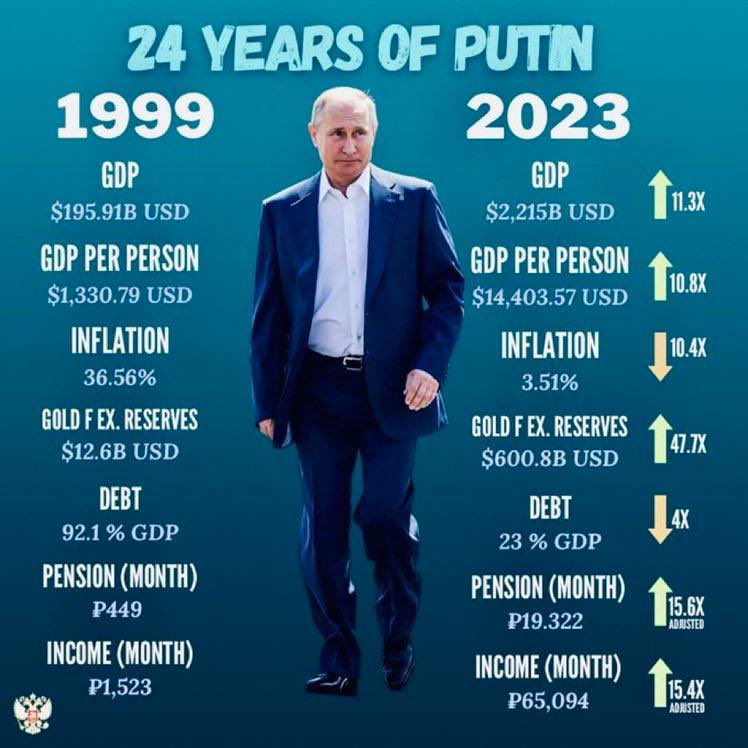
• • •
Missing some Tweet in this thread? You can try to
force a refresh


